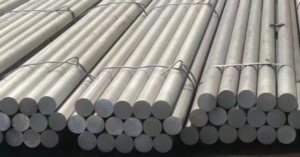The terms “tool steel” and “carbon steel” are often encountered in the vast world of metallurgy and materials engineering. Is tool steel the same as carbon steel? As a seasoned expert in metal materials from Sino Special Metal, it is essential to clarify the nuances between these two categories to ensure accurate understanding and application in various industrial settings.

Is tool steel the same as carbon steel?
Definitions and Fundamentals
To begin with, let’s define both tool steel and carbon steel. Carbon steel is a class of steel alloys that primarily contain iron and carbon, with the addition of varying percentages of manganese, silicon, sulfur, and phosphorus. The carbon content, typically ranging from 0.05% to 2.1% by weight, significantly influences the properties of the steel, such as hardness, strength, ductility, and weldability.
On the other hand, tool steel is a subset of carbon steel, specifically designed for the manufacture of cutting and shaping tools. It is known for its exceptional hardness, wear resistance, and ability to retain its sharpness under heavy loads and high temperatures. Tool steel is typically alloyed with elements like tungsten, chromium, vanadium, and molybdenum to enhance its performance characteristics.
Composition and Alloying Elements
The composition of tool steel is carefully tailored to meet the rigorous demands of tool manufacturing. Carbon content in tool steel is typically higher than in many other carbon steel grades, often exceeding 1%. However, it is the addition of alloying elements that truly sets tool steel apart. Chromium, for instance, increases corrosion resistance and hardness, while molybdenum and tungsten contribute to improved wear resistance and red hardness (the ability to maintain hardness at elevated temperatures). Vanadium is known to improve grain refinement and toughness.
In contrast, carbon steel alloys have a wider range of compositions and applications. While some carbon steels may contain similar alloying elements to tool steel in smaller quantities, their primary purpose is not necessarily for tool making. Carbon steels are used in a diverse array of applications, from construction and infrastructure to automotive and machinery components.
Properties and Applications
The distinct composition of tool steel results in a unique set of properties that make it ideal for tool applications. Its high hardness and wear resistance allow tools made from tool steel to retain their sharpness and performance over extended periods of use. This is crucial in applications such as machining, cutting, stamping, and forming, where tools are subjected to heavy loads and high temperatures.
Carbon steel, on the other hand, exhibits a broader range of properties depending on its composition and heat treatment. Low-carbon steels are known for their ductility and weldability, making them suitable for forming and welding applications. Medium-carbon steels offer a balance of strength and ductility, often used in machinery components and automotive parts. High-carbon steels, though not typically used for tool making, exhibit excellent hardness and wear resistance, similar to some tool steel grades, but at a lower cost.
Heat Treatment and Processing
The heat treatment of tool steel and carbon steel plays a crucial role in determining their final properties. Tool steel undergoes a series of complex heat treatment processes, including hardening, tempering, and quenching, to achieve the desired hardness, wear resistance, and toughness. These processes are precisely controlled to optimize the steel’s performance for its intended application.
Carbon steel, too, undergoes heat treatment, but the processes and parameters may differ depending on the specific grade and application. Annealing, normalizing, and quenching are common heat treatment methods used to modify the properties of carbon steel.
Conclusion
In conclusion, while tool steel is a subset of carbon steel, it is distinct in its composition, properties, and applications. Tool steel is specifically designed for the manufacture of cutting and shaping tools, requiring exceptional hardness, wear resistance, and red hardness. Carbon steel, on the other hand, is a broader class of alloys with a wider range of compositions, properties, and applications.
Thank you for reading our article and we hope it can help you to find the answer to the question: Is tool steel the same as carbon steel? If you are looking for tool steel suppliers and manufacturers online now, we would advise you to visit Sino Special Metal.
As a leading supplier of tool steels from Shanghai China, Sino Special Metal offers customers high-quality tool steel products at a very competitive price.




